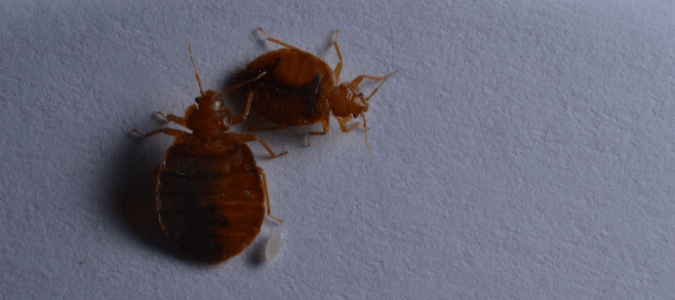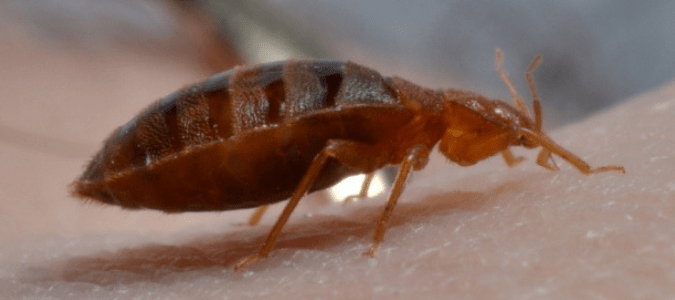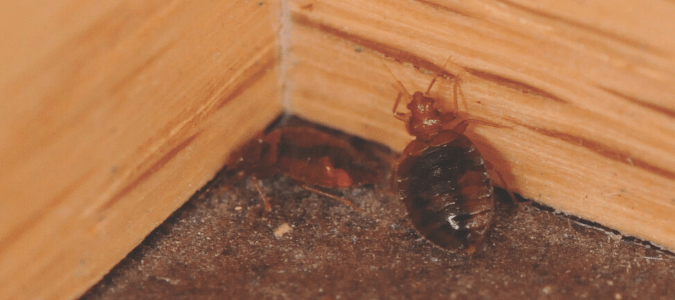If you wake up in the morning with red bites on your body, your home may have bed bugs. Bed bugs can be a major hassle to homeowners, and this is a much more common issue than you might expect.
But how would you know if your home has bed bugs or other pest problems, like mosquitoes? By better understanding the appearance of bed bug eggs, the life cycle of bed bugs and the habits of adult bed bugs, you will be empowered to address this problem.
It’s best to get professional bed bug control help as soon as you suspect bed bugs. Experts can put a stop to bed bugs so that you and your family can sleep in peace again.
If you are asking yourself questions like, “Do bed bugs fly?” or “How do bed bugs get in my house?” keep reading.
Learning the Life Cycle of Bed Bugs
Bed bugs are unique pests. There is a popular myth that bed bugs only show up in dirty or unkept homes. But bed bugs bother homeowners across the United States, regardless of how clean your home is. It can be very frustrating to deal with bed bugs, but you aren’t alone in facing this challenge.
The first step in discovering whether you are dealing with bed bugs or not is to look for the signs of bed bugs, including bed bug eggs. Identifying bed bug eggs will allow you to recognize the potential for an infestation and request bed bug control as soon as possible.
Of course, hunting for bed bug eggs may be more of a chore than you have time or energy to take on. A professional would gladly step in and take over the search for you. Bed bug control professionals know exactly what we are looking for. They will treat your home with respect and care. They will quickly assess the issue and provide your family with peace of mind.
What Do Bed Bug Eggs Look Like?
Bed bug eggs are difficult for humans to see because they are so small. The white color of bed bug eggs may blend in with white sheets, making them harder to detect. Bed bug eggs stick to the fabric in your bed.
Adult females can lay a few bed bug eggs each day in or around your bed. Bed bug eggs exist in this state for about a week after which they hatch into baby bed bugs, or nymphs. Nymphs feed on blood to help them grow larger. After each stage of growth, bed bugs leave behind their light brown skins. Bed bug eggs develop into adults anywhere from just over a month to a few months.
When they are fully developed, mature bed bugs are red or brown in color and approximately the size of a lentil. Adult bed bugs have flat, round bodies without wings. Many of their features, including their antennae and their hairy heads, are hard to see without a microscope.
What Are the Signs of a Bed Bug Infestation?
Bites alone are not enough evidence to prove that your home has bed bugs. Homeowners need to look for other signs of bed bug activity before moving forward with bed bug control solutions. This is why the assistance of pest control experts is so vital.
If you are concerned about bed bugs, an initial examination of your bedroom will provide clarity. Telltale signs of bed bug activity include blood spots or bed bug droppings on your mattress.
Look around your bed, including under the sheets, around the bed frame or the box spring, and on the headboard. You may notice light-colored eggs or excess skins or dark spots that are blood or fecal matter. Bed bugs may also gather in tight locations, like the seams of your mattress or the space behind your headboard.
Bed bugs may also show up on furniture or the floorboards within a six-foot perimeter of your bed. Potential areas of infestation include baseboards, picture frames, curtains, nightstands or chairs. Bed bugs may hide behind mirrors, under wallpaper or inside electrical outlets.
How Can You Stop a Bed Bug Infestation?
Homeowners find getting rid of a bed bug infestation to be a big challenge. Reasons why include the small size of bed bug eggs and the difficulty to find locations where these pests hide. Plus the ability of bed bugs to travel throughout your house makes stopping them entirely on your own almost impossible.
There are some simple steps you can take to prevent the spread of bed bugs. However, your home and your family would be better off in the hands of a bed bug control professional.
To start, wash your bed sheets with very hot water. You can also try drying fabrics you don’t want to wash, including bags and backpacks, in your dryer on high heat. The heat kill bed bugs fast.
Place items you cannot wash or dry outside in a trash bag on a warm day. Some items that cannot be cleaned or left outside may need to be thrown away. You may not be able to save furniture with fabrics or cracks that you are unable to treat if an infestation is high inside these pieces.
Tidy up your bedroom, not because bed bugs are attracted to dirty rooms but because tidying helps remove potential hiding places for bed bugs. You want to clean and refresh as many surfaces where adult female bed bugs could possibly lay bed bug eggs.
Thorough vacuuming is also a helpful practice to stop further infection. Unfortunately, because bed bugs are sneaky, you will not be able to reach every surface they hide in or around with a vacuum cleaner.
At-home sprays and bed bug control treatments are known for not being very effective, so relying on an expert to spot bed bug eggs and control these pests is the best solution.
Recognizing the Habits of Bed Bugs
Bed bugs are not only an annoyance to you and your family, but they can also attack household pets. These pests seek out warm-blooded prey like humans, cats and dogs to drink their blood. Bed bugs bite their victims while they sleep at night, sucking blood for up to 10 minutes.
Getting a behind-the-scenes look at the behaviors of bed bugs can help homeowners feel more in control of their bed bug issue. Knowing that bed bugs do not cause a major health risk is a relief. Homeowners should also know that it is not their fault that their home has bed bugs.
Bed bug eggs, nymphs, or adults should be dealt with quickly so that the problem does not get worse. By acting fast, you can eliminate bed bugs more efficiently.
Do Bed Bugs Fly?
Bed bugs do not have wings, so they are not able to fly. However, these pests are expert travelers who get around by crawling quickly across the surfaces in your home. This is how bed bugs move from room to room in search of the cozy comfort of your bedroom.
Bed bugs are small and hard to detect, so they can travel across your floor or along your floorboards often unseen. Adult bed bugs also crawl on your home’s ceiling and travel through cracks in your flooring or walls. As an alternative method of moving throughout your house, bed bugs travel on fabric surfaces, like clothing or bags.
How Do Bed Bugs Get in Your House?
Bed bugs in the United States are experiencing a revival. Circumstances have changed greatly since World War II, in which the number of homes experiencing bed bug infestation greatly declined. While experts are not sure why these pests have returned, the increased convenience of global travel may play a major role.
Going out into the world comes with an inevitable risk of bringing home bed bugs. Whether you are traveling overseas, staying the night at a hotel or visiting your local gym or library, bed bugs can attach to your clothing.
Having bed bugs is not an indication that your home is dirty. Instead, bed bugs commonly show up in many different locations and it is unavoidable to prevent the risk of carrying bed bugs home with you. If you believe you may have a bed bug problem, a professional can provide you peace of mind with effective pest treatments.
ABC Can Eliminate the Bed Bugs in Your Home
You don’t have to live with bed bugs. Discovering bed bug eggs, skins, feces or blood can be surprising and worrying, but this is a very normal issue for homeowners to have. Trying to solve the problem yourself with home remedies or store-bought chemicals is a headache. Instead, trust the experts at ABC Home & Commercial Services to locate bed bug eggs and control these pests with targeted solutions.


